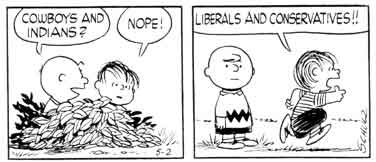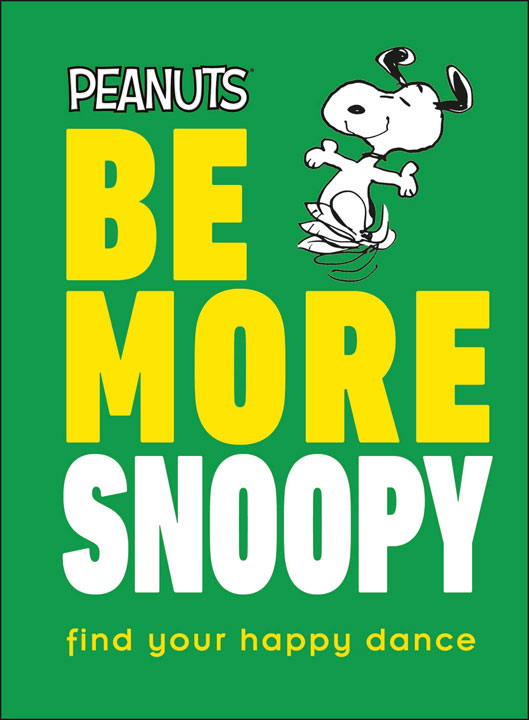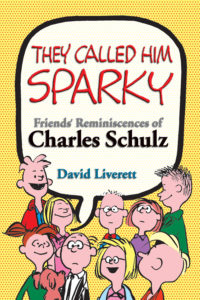Complete Peanuts 4 Review
- By : Nat
- Category : General, New releases, Now shipping, Reviews
If you asked me what my favorite Peanuts daily and Sunday of all time were, well, my response would depend on when you asked me. But the odds are pretty good that I’d talk choose the Sunday strip where Linus builds a big snow dinosaur, and the daily where he professes an interest in becoming a wild-eyed fanatic. The strength of both of these depends heavily on the drawing of “funny pictures”, as Schulz would describe his job; the greatness isn’t just in the concept, it’s in the implementation. And both of these strips are in volume 4 of The Complete Peanuts, covering the years 1957-1958.
But reading through this book, I was thinking less about the old favorite strips that I got to read again, and more about the many strips here I had never seen before. It got me thinking about how much the reputation of Peanuts depends on the editing of the long-popular Peanuts reprint books. I don’t mean the generalities of the reputation – Peanuts is high-quality material whether you’re reading the complete run or selected bits. I mean the specifics, such as that Schulz always achieved timelessness, or that his work got more repetitive as time went on.
Reading through this book, there are a fair number of strips (ones that didn’t make the earlier reprint books) that aren’t timeless. As a prime example, consider the March 17th, 1958 strip in which Charlie Brown has a toy newspaper printing press that comes with everything, even “a little slip of paper which entitles me to an appointment with Jim Hagerty”. Now, that ain’t timeless. In fact, I bet very few of you who were alive in 1958 remember who Hagerty was, much less folks who came later. But strips like that, whether they seemed to specific or just seemed like they might go over the heads of kids even at the time, were general not reprinted.

Topical in 1958, and yet timeless
The view that the strip got more repetitive in later years can also be laid (at least in part) on the reprint collections. As time went on, the reprint collections became generally more complete. If Schulz was doing a running gag in 1998, then those strips are all reprinted in the appropriate reprint book, and reading through them in a day or so is likely to have a different impact than reading through those strips over the course of the year. The books that reprinted 1958, on the other hand, were never so complete (until now, of course). So for example, an earlier book might only have one or two strips about Snoopy resting his head in his water dish, or about Violet explaining ways in which her dad is better than Charlie Brown’s. Reading The Complete Peanuts will show you that there were many more strips built around that concept, and that the editors of those earlier reprints may have been avoiding that repetition – a reasonable concern for the casual reader, but of course always a loss for the true Schulz fan.
(Of course, there are even simpler reasons for not reprinting some strips. For example, the strip about Pig-Pen eating the last of his easter eggs was funny when people read it in the papers toward the end of May, but the joke would fall flat if you read it in a book the week after Easter.)
Other items of note:
- Previously unreprinted information about the Snicker-Snack company
- Mentions of the draft, veterans, and the Beat Generation
- Strategies for tossing rocks at stars
- Schulz comments on my creation of this blog and website

Formatwise, the book is like the rest of the series, with an introduction (by Jonathan Franzen, author of The Corrections) and the ever-useful index where you can look up things like what strips mention Casey Stengel or Van Cliburn. Still, it might be useful to have notations or an historical reference glossary in the book to let the youngsters know that “hi-fi” was a term used to signify audio equipment with accurate sound reproduction (and thus a silly term to describe a jump rope), or to inform middle-agesters like myself that Jim Hagerty was President Eisenhower’s press secretary (hey, I wasn’t going to leave you hanging on that!)
Do you want this book? I doubt there’s anyone reading the AAUGH blog who wouldn’t want it. It’s filled with great strips you’ve seen before and ones you haven’t, making it entertaining and interesting. Volume 4 is now shipping, and you can  order it on its own, or you can get
order it on its own, or you can get  the boxed set that comes with volume 3 (1955-1956) at an even greater savings.
the boxed set that comes with volume 3 (1955-1956) at an even greater savings.
(For those people who already have volume 3 but want the box that comes with the boxed set, here’s my suggestion: buy the boxed set, which costs less than $14 bucks more – then take the new copy of #3 out of the box and give it to someone for the holidays. Since you were going to buy volume 4 anyway, it’s like getting someone a nice gift for less than half the cover price, plus folks in the US will qualify for free shipping without buying anything else.)
You know, I’m always at a loss for reviewing things like the Baby Snoopy Santa shaped board book. This time, though, I had help. The moment I took it out of the Amazon box, my 11 month old daughter Allison came over and grabbed it and took it for her own. Each time I pick up this book in her sight, she grabs it. It’s not a book I would’ve chosen for her, but she has her own opinion, and she’s much more the target audience for this. It’s a hit!
Peanuts Holiday Treasury collects five adaptations of animated specials (It’s the Great Pumpkin, Charlie Brown, A Charlie Brown Thanksgiving, A Charlie Brown Christmas, Be My Valentine, Charlie Brown, and It’s the Easter Beagle, Charlie Brown) into a single hardcover volume, no dust jacket. The one thing added to the package is a one page foreword by Lee Mendelson, producer of these specials. Which is kind of odd. After all, such a foreword would seem to be aimed at an older reader than the simplified adaptations that follow it. Anyway, it’s out, so if you were thinking of getting these adaptations for someone as a gift, you may want to go for this hardcover version instead.





